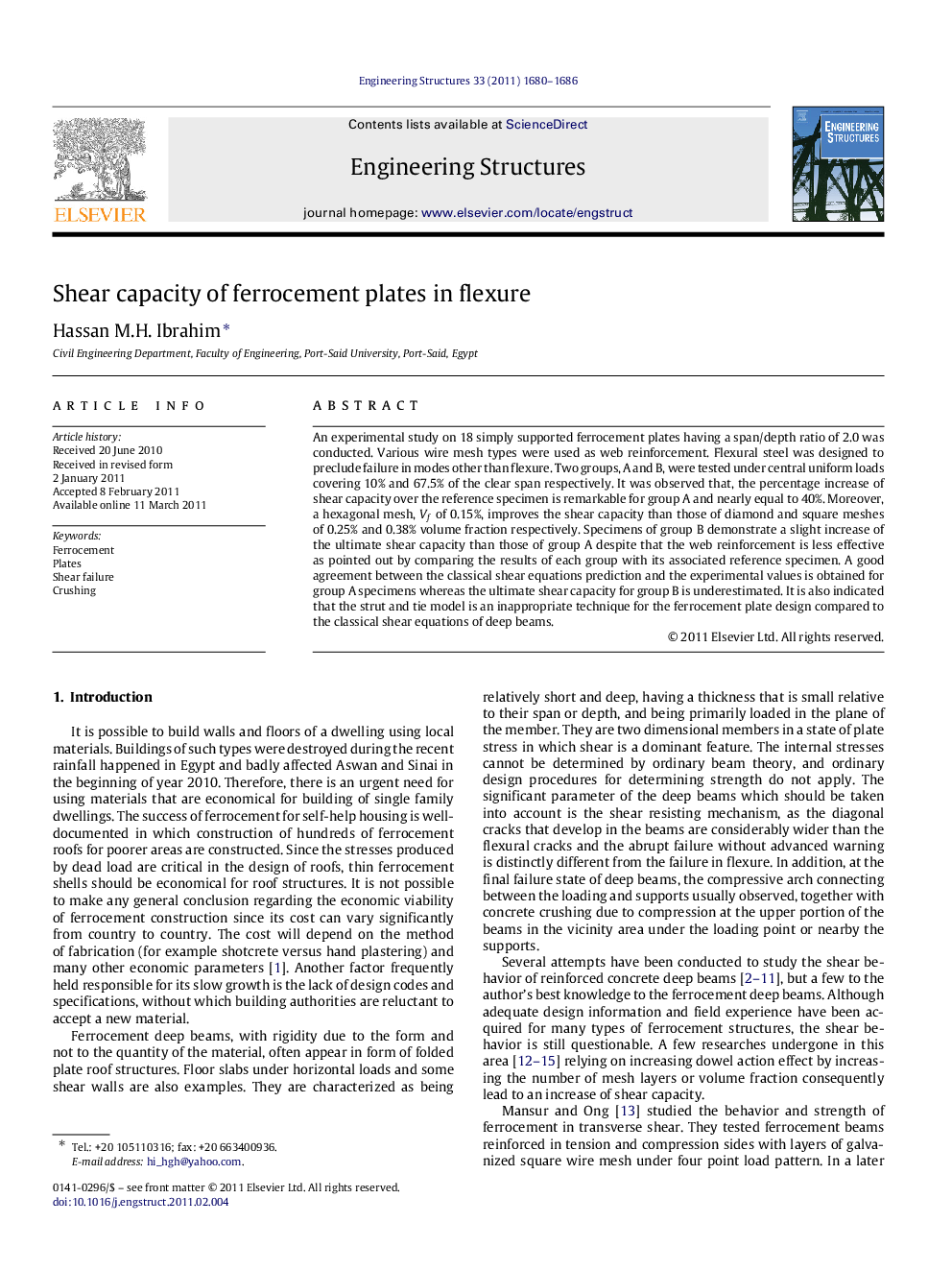| Article ID | Journal | Published Year | Pages | File Type |
|---|---|---|---|---|
| 268177 | Engineering Structures | 2011 | 7 Pages |
An experimental study on 18 simply supported ferrocement plates having a span/depth ratio of 2.0 was conducted. Various wire mesh types were used as web reinforcement. Flexural steel was designed to preclude failure in modes other than flexure. Two groups, A and B, were tested under central uniform loads covering 10% and 67.5% of the clear span respectively. It was observed that, the percentage increase of shear capacity over the reference specimen is remarkable for group A and nearly equal to 40%. Moreover, a hexagonal mesh, VfVf of 0.15%, improves the shear capacity than those of diamond and square meshes of 0.25% and 0.38% volume fraction respectively. Specimens of group B demonstrate a slight increase of the ultimate shear capacity than those of group A despite that the web reinforcement is less effective as pointed out by comparing the results of each group with its associated reference specimen. A good agreement between the classical shear equations prediction and the experimental values is obtained for group A specimens whereas the ultimate shear capacity for group B is underestimated. It is also indicated that the strut and tie model is an inappropriate technique for the ferrocement plate design compared to the classical shear equations of deep beams.
